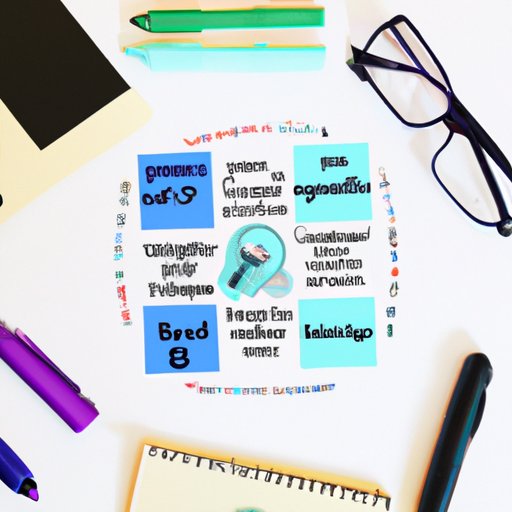
I. Introduction
Getting an A in school is something that every student strives for, but it can be difficult to achieve without the right strategies and techniques. Often, students struggle to find a method that works for them, leading to frustration and poor performance in the classroom. This article aims to provide students with practical tips and study techniques to help them score an A in any given subject.
II. Practical Tips
To get an A, students must study materials thoroughly. They should start by reading the textbook and any supplementary materials to gain a better understanding of the subject matter.
Taking notes in class can also be helpful in the studying process. It might be difficult to listen to lectures and remember all of the information, so taking notes can help. Students should focus on writing down important concepts and questions they have to take back with them and research later on.
Creating flashcards is another way to retain information. Flashcards can be used to help remember key terms or definitions quickly. Once you memorize the term, you can hand it off to someone else studying the same topic and see what they come up with.
Another useful technique is to use mnemonic devices to help remember important details. Mnemonic devices are strategies that can help learners remember information effectively, such as acronyms or rhymes. By associating concepts with something more memorable, performance can improve.
Staying organized can also be helpful; students should create a study schedule to help with planning and prioritize their tasks. This can help ensure that everything is covered, from assignments to exams, without being overwhelmed.
III. Study Techniques
One of the most popular study techniques is the Pomodoro method. This technique divides studying into timed intervals, usually 25 minutes, followed by a short break. It can be helpful in improving focus and productivity, and it’s a great way to stay on top of work without burnout.
Spaced repetition is another technique you can use to help retain information more effectively. This technique involves re-visiting information repeatedly over a longer period. In between each session of review, there should be an increase in time before revisiting.
Visualizing the material you are studying is also helpful in enhancing memory. By creating images in your mind, it helps your brain store information more long-term. Along the same lines, repetition is significant in memorizing information. The more times something is read, written, or recited, the stronger that memory trace becomes.
IV. Learning Styles
Learners should identify their learning style and tailor studying methods to suit it. There are three primary types of learning styles: visual, auditory and kinesthetic. Visual learners learn and remember information through charts, diagrams, and other visual aids, while auditory learners retain information by listening to lectures and music. Kinesthetic learners require hands-on learning through experiential activities.
Students can determine their learning style by taking online quizzes or experimenting with different methods. Once the learning style is identified, learners should use these personalized tools to enhance their studying experience.
V. Time Management
Procrastination is a prevalent problem amongst students. To overcome procrastination, students should break down large assignments into smaller tasks, schedule time to work on each one daily and keep track of progress.
Another way to stay organized and on top of assignments is to plan the semester in advance. By creating a chart or calendar with assignments and exams, it’s easier to prioritize tasks and work accordingly.
Setting goals and creating deadlines is another way to help with prioritizing tasks. By setting weekly or monthly goals, learners have something to work towards and can become more motivated in the process.
VI. Study Groups
Study groups can be helpful in brainstorming and sharing ideas with other learners. Studying with others, comparing notes, and pooling intellectual resources can help you learn more effectively in many cases. It’s essential to create a study group that’s productive by setting goals and scheduling consistent study sessions.
VII. Conclusion
Getting an A in school isn’t impossible with the right techniques and strategies in place. Students should start by studying materials thoroughly, creating a study schedule, and identifying their learning style to enhance their studying experience. Strategies like the Pomodoro method, spaced repetition, and visualization can help improve productivity and focus, while study groups can help learners collaborate and understand new ideas.
Remember, everyone learns differently, and it might take time to find what techniques work best for you. The most significant thing is to keep an open mind and stay motivated. Try these methods and find the best one that works for you, modifying and tweaking it for different courses and topics as needed.




